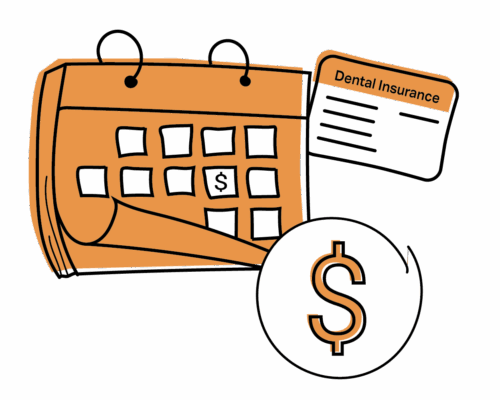Gum Infection Emergency Care: An In-Depth Guide
A gum infection can develop slowly, starting as gingivitis, leading to inflamed and bleeding gums. Without treatment, it can progress to periodontitis, causing bad breath, pain, and even loose teeth. Gum disease only worsens over time. This guide explains how to recognize gum infection symptoms, find relief at home, and know when to seek professional care.

When Treatment for Infected Teeth May Be Required
Bleeding Gums
Frequent bleeding during brushing or flossing signals early infection.
Persistent Breath
Bad breath that lingers, even after brushing, indicates bacteria growth.
Receding Gums
Teeth appear longer as gums pull away from the roots.
Loose Teeth
Wiggling teeth suggest bone damage from advanced gum disease.
Swollen Tissue
Puffy, tender gums that make chewing uncomfortable or painful.
Pus or Abscess
Visible infection pockets near the gums require urgent dental care.
What to Expect During a Dental Visit for Wisdom Tooth Pain
Examination
Gums are checked for inflammation, and their pocket depth is measured.

X-rays
Images may be taken to detect hidden bone loss under the gumline.

Cleaning
Plaque and tartar are removed both above and below the gums.

Why You Shouldn’t Wait
A gum infection never improves by itself. Gingivitis begins with plaque at the gumline and can cause bleeding or swelling. Left untreated, it progresses to periodontitis, where gums and bone pull away from teeth, forming infected pockets. These deepen over time, leading to bone loss and, eventually, tooth loss. Beyond your mouth, untreated gum disease has been linked to heart disease, diabetes, and even stroke. The good news? Dentists treat gum infections every day, often with fast results. Acting now protects your smile, your comfort, and your overall health.
Costs, Insurance, and Payment Options
Treating a gum infection early is beneficial for both your health and your wallet. A deep cleaning often costs far less than the crowns or implants needed after tooth loss. Most dental insurance plans cover periodontal treatment (although coverage varies, be sure to check with your dentist). If you’re uninsured, many offices offer cash discounts, payment plans, or membership programs to help spread out the expenses. When you call, share your insurance status so the team can walk you through options. Don’t let cost hold you back: delaying care usually means higher bills later. Acting now protects both your smile and your budget.

ER or Dentist? Making the Right Choice
Not all gum infections are emergencies. See an emergency dentist if you have bleeding, swollen gums, or pain that isn’t improving. Go to the ER immediately if swelling spreads to your face or neck, or if you can’t swallow or breathe. These are dangerous, potentially life-threatening signs. If you’re unsure, call a dentist first. Be ready to share information about when your symptoms started, your pain level (1–10), and whether you’ve taken any medication. These details help the dentist decide if you should come in right away or go straight to the hospital.
How to Manage Gum Infection Symptoms While Waiting
If you can’t see a dentist right away, there are safe steps to manage discomfort. Rinse gently with warm saltwater to calm inflamed gums. Use a cold compress on the outside of your cheek to reduce swelling. Take ibuprofen or acetaminophen as directed for pain relief. Stick to soft foods, and avoid alcohol, smoking, or sugary drinks that can worsen infection. Keep brushing gently, but don’t force flossing if the gums are tender. These steps won’t cure the infection, but they can bring short-term comfort until you’re able to see a dentist.

Spotting and Preventing Complications
Untreated gum infections don’t just threaten your smile; they put your overall health at risk. Gum disease has been linked to systemic conditions such as diabetes, heart disease, and stroke. Within the mouth, progression leads to gum recession, bone loss, and eventual tooth loss. After treatment, continue to monitor for any red flags, such as worsening swelling, bleeding, or loose teeth. Prevention is straightforward: brush your teeth twice daily, floss once a day, and visit your dentist regularly for checkups and professional cleanings. By addressing problems early, you can avoid serious complications and protect both your oral health and your long-term well-being.

Ask A Dentist: Dr. Dennis Rollins:
When is a tooth extraction an emergency and when it can wait?
Class aptent taciti sociosqu ad litora torquent per conubia nostra, per inceptos himenaeos. In hac habitasse platea dictumst. Aenean dignissim, nibh sed iaculis hendrerit, velit risus rhoncus massa, in dictum nulla lectus ac eros. Phasellus laoreet mauris turpis, eget varius nisl tempor nec. Fusce eget ante mattis diam blandit cursus. Vivamus dignissim est sit amet tellus venenatis varius.
Nunc blandit libero sit amet odio ornare, eget suscipit lacus blandit. Quisque bibendum laoreet convallis. Vestibulum vestibulum posuere risus at scelerisque. Vestibulum ante ipsum primis in faucibus orci luctus et ultrices posuere cubilia curae; Mauris sed sapien bibendum, maximus eros ut, volutpat erat.

Find Gum Infection Treatment Near You
Don’t wait for gum infection symptoms to worsen.
Call now for a same-day appointment with a dentist near you.
Don’t wait for gum infection symptoms to worsen. Call now for a same-day appointment with a dentist near you.
Frequently Asked Questions
What is the fastest way to treat a gum infection?
See a dentist. Professional cleaning removes plaque and tartar, and antibiotics may be prescribed for severe cases.
What’s the best emergency action plan if gum infection symptoms get worse?
- Call 911: If swelling restricts breathing or swallowing.
- Go to ER: If swelling spreads quickly in the face or neck.
- Call Dentist: For bleeding gums, pus, or persistent pain.
- While Waiting: Rinse with saltwater, use a cold compress, and take ibuprofen.
Can a gum infection go away on its own?
Gingivitis can be reversed with brushing, flossing, and professional cleaning. Periodontitis requires dental treatment.
How do I know if I have a gum infection?
Red, swollen, bleeding gums are the most common signs. Bad breath, gum recession, or loose teeth are also symptoms.
What can I do at home for a gum infection?
Brush twice daily, floss once a day, and rinse with antiseptic mouthwash. These help manage symptoms but don’t replace professional care.
Is a gum infection painful?
Early stages may not hurt. As the infection progresses, chewing discomfort, swelling, or tenderness are common.
What happens if a gum infection is untreated?
It can lead to bone loss, loose teeth, and even tooth loss. Advanced gum disease also increases risks for systemic conditions.
How much does it cost to treat gum infection?
Costs vary by severity. A cleaning may cost a few hundred dollars, while advanced treatments like scaling and root planing are more expensive.
Does dental insurance cover gum infection treatment?
Most plans cover at least part of gum disease care. Check your plan for details about scaling, root planing, or surgery.
What’s the difference between gingivitis and periodontitis?
Gingivitis is mild and reversible. Periodontitis is advanced, causes permanent damage, and requires professional treatment.
Can gum infection spread to others?
The bacteria that cause gum infections can be passed through saliva, such as by sharing utensils or kissing. However, you’re more likely to develop an infection yourself if you have poor oral hygiene, smoke, or have health conditions like diabetes that make your gums more vulnerable.
What are the risk factors for gum infection?
Smoking, diabetes, family history, and poor oral hygiene all increase risk
How can I prevent a gum infection?
Brush twice daily, floss daily, use mouthwash, and see your dentist for regular checkups.
What should I tell my dentist when I call?
Share when your symptoms started, your pain level (1–10), whether you have swelling or fever, any medications taken, and your insurance status. This helps them prepare for fast, effective care.
Related Information

Urgent/24-7 Dentist
24/7 care for dental pain and injuries.
Read More

Walk-in/Same Day Dentist
Same-day dental care without an appointment.
Read More

Emergency Dentist Page
Fast relief for broken teeth and pain.
Read More

